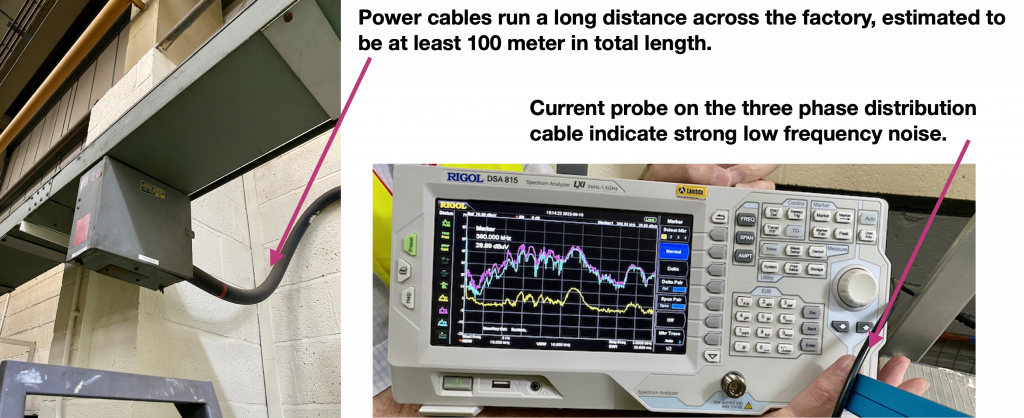Can we use low-cost old technology for modern products?
By Dr. Min Zhang, the EMC Consultant
I was reading Ken Wyatt’s article about an interesting case where the police used a simple AM radio to locate where the marijuana growers are, see https://www.edn.com/how-cops-are-finding-grow-ops-with-am-radios/. This reminds me of this ancient technology that is still being used today in the field.
I am not an amateur radio operator, but I do have a good radio that I often bring with me to trips to the beach. My radio is a Tecsun PL660, shown below, which is not bad as a general purpose radio.

Recently, I visited a client’s site for a job. The job is related to on-site EMC tests since the EUT is a large-size installation. But the ambient noise at the customer’s factory is large enough to cause the issues. The issue is, even with the EUT off, the ambient noise exhibits noise that is higher than the limit line defined by the standards. This can be clearly seen in the results while we were using a rod antenna to perform the low frequency radiated emission scan.

We then needed to locate where this low frequency noise comes from. Holding a large size Rod antenna together with the spectrum analyzer and walking in a large factory site is certainly not a good idea. And my handheld TTI spectrum analyser only works from 10 MHz. Another tool, a Credence Technologies EM Eye also works from 1 or 2 MHz. In cases like this, we made the decision and simply took out our Tecsun PL660, tuned it to an AM station (Antenna gain is set as local) and walked about in the factory. We expected the noise level picked up by the radio would increase when we approach the noise source.
Some background – Why do we use AM Vintage Radios?
AM radios with envelope detectors respond to radiated EMI from current impulses, things like lightning, sparks, any magnetic field radiating from a conductor where dI/dt is large. The discriminator in a vintage FM radio is basically an AM envelope detector preceded by a filter with a linear ramp frequency response. The filter converts instantaneous frequently deviations in the program to amplitude deviations, which are then demodulated by the envelope detector. Such detectors are susceptible to impulse noise, especially if preceding stages are not driven into compression via hard limiting or amplifier clipping. Modern FM receivers, which use Phase-Locked Loops (PLLs) to implement the detection function, are much less susceptible to impulse noise. However, any FM receiver which has an Automatic Gain Control (AGC) may also be susceptible, as the constantly changing RF level induced by the EMI will cause the AGC to constantly react, throttling the receiver gain back in response to each impulse.
Results
By using the AM radio, we were able to locate the noise source as shown in the picture below. To confirm that is actually the case, we used an RF current monitoring probe to measure the common mode. The noise profile is very similar to what we measured using the Rod antenna.

Conclusion
A vintage radio, which often costs less than 50 USD, can be used as an effective troubleshooting tool. This is particular true in a large system installation as it was discussed in this article. It is fair to say, when it comes to troubleshooting EMI issues, it is often the know-how that helps, not expensive equipment (though expensive equipment often helps).